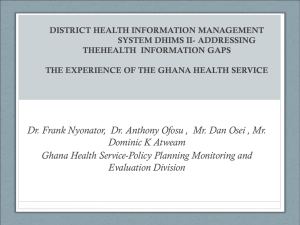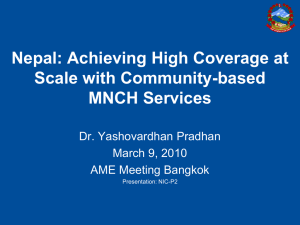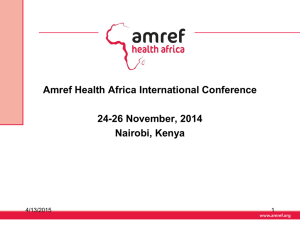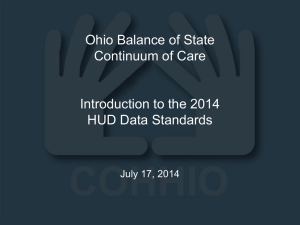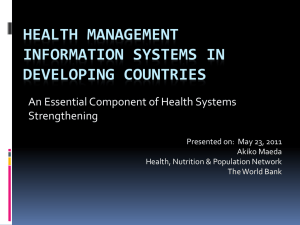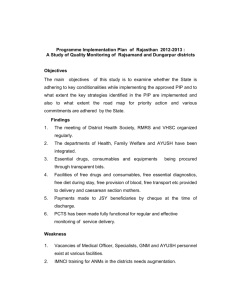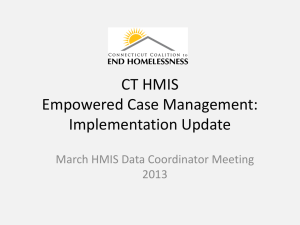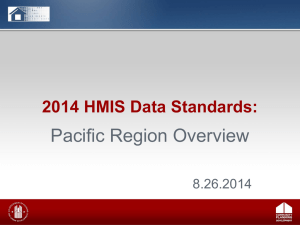Achievements – Improved timeliness and
advertisement
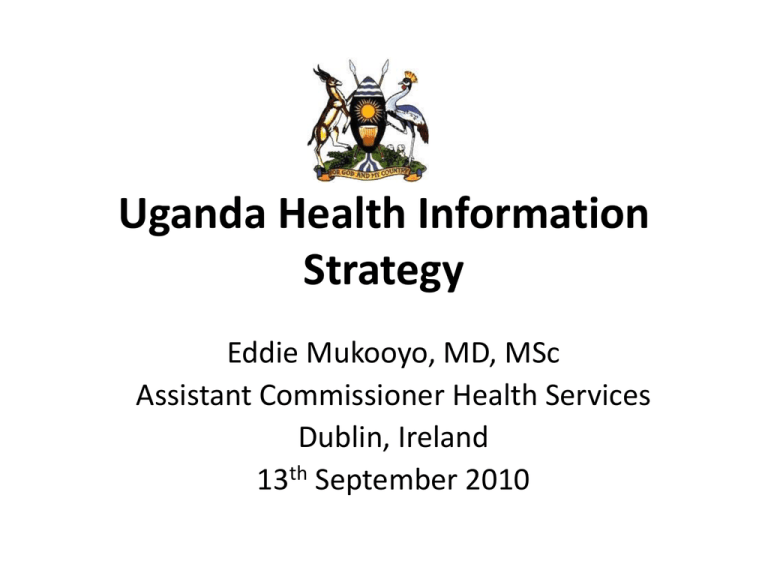
Uganda Health Information Strategy Eddie Mukooyo, MD, MSc Assistant Commissioner Health Services Dublin, Ireland 13th September 2010 Presentation Outline • Health Reforms • Monitoring & Evaluation of Sector Performance • Categories of Health Information • Challenges • Needs Assessment • Health system strengthening • Key recommendations Health Reforms To improve efficiency, effectiveness & address equity and inequality:• Decentralisation • Health Policy I, II • Health Sector Strategic Plan I, II, III • Sector Wide Approach in implementation • National Minimum Health Care Package Monitoring & Evaluation TWG • Sector Performance Monitoring Indicators • HMIS as main source of data/information •Information on referrals •Outpa CATEGORIES OF HEALTH INFORMATIONON Information on curative services •In-patient information •Laboratory information •X-ray information •Operating theatre information Information from other data sources e.g. surveys, special studies… Resource Management e.g. inventories •Health facilities •Equipment inventory •Staff listing Logistics and commodities •Stocks of commodities •Supplies like drugs and vaccines. Data on individual clients Information on Preventive services •Antenatal care •Maternity services •Child health services •Family planning services etc. Issues with HMIS • • • • Data not timely, complete or reliable Inadequate funding Paper – based HMIS Recording keeping & Data capture by health workers • HMIS not well appreciated • Poor utilisation of data Needs Assessment supported by Clover III Project • Lack of national legislation and policy framework for HIS • Lack of HMIS skills • Inadequate funding • Inadequate ICT Infrastructure • Lack of records assistants • Inadequate use of Information generated Health System Strengthening Clover Project III Based on assessment results, new interventions were jointly designed by all stakeholders: • Capacity Building • Improvement in ICT Infrastructure • Provision of Health facility databases • Technical support supervision Health System Strengthening Clover Project III - Interventions • Training 217 Health workers in electronic data management, & utilisation • Provision of ICT Infrastructure & connectivity – Procured 39 desktop computers (4 for MoH/RC, 11 for District Health Offices + 24 for the HSDs) • Follow-up hands on support supervision & maintenance plus trouble shooting • Supported Regional & District evidence-based Planning meetings • Supporting the review process of the HMIS Achievements of the Clover Project - 1 • Improved timeliness and completeness of reporting • Informed decision on effectiveness and appropriateness of eHMIS & wHMIS systems - HMIS Review Process • Better evidence-based plans & District Performance League Tables) • Enhanced data capture due to integrated database tools – rather than SILOs Achievements: Improved timeliness and completeness of HMIS OUTPATIENT reporting (an average for the CLOVER III districts) 100% 90% 80% 70% 60% 50% Timeliness Completeness 40% 30% 20% 10% 0% 2007/08 2008/09 2009/10 Achievements – Improved timeliness and completeness of HMIS INPATIENT reporting (an average for the CLOVER III districts) 100% 90% 80% 70% 60% Timeliness 50% Completeness 40% 30% 20% 10% 0% 2007/08 2008/09 2009/10 Achievements of the Clover Project - 2 • Revised HMIS tools and manuals in line with HSSP III • Increased appreciation, use & demand for information at district level – creation of information department with a budget • Supported a data validation exercise in 4 CLOVER III districts and 2 NON CLOVER districts to assess the quality of data at district, HSD and selected health facilities. Proportion of district HMIS reports matching with reports kept at RC – Mid-West Region 100% 100% 100% 100% 90% 80% 80% 70% 67% 67% % 60% 2 2 50% 40% 30% 20% 10% 0% Kiboga Kibaale District Mubende Challenges - 1 • Health Information System (HIS) is fragmented • Information definitions are not harmonized • Methods of collection vary greatly, and • Rules for data sharing do not exist • Significant duplication of effort at all levels, • As a result use of health information is curtailed Challenges - 2 • Inadequate Funding both at national and district level • Paper – based HMIS for half the districts • Challenges of New Districts – Lack Capacity, Resources, logistics , etc • A learning process for new responsibilities Health Sector Strategic Plan III • HMIS has been identified in the Health Sector Master Plan as one of the priority areas of health system strengthening for accelerating achievements of the health sector goals & MDGs. National Ownership - 1 • Alignment and Efficient Utilization of Human and Financial Resources – Alignment of processes and integration within major vertical programs • Increase Efficiency in community and facility-based Patient Care for Better Health Outcomes – Strengthen patient referral and facilitating data transfer – Capture community based Interventions (case management & prevention) – Enhance use of information for decision making for better health outcomes National Ownership - 2 • Increase Health Infrastructure Capacity - Linkage of all districts and health units to a functional and efficient electronic health information system for better health outcomes (e-governance initiative & Interoperability – data warehouse) • Private Sector Engagement – HIS training and other allied health business opportunities Immediate Action • Establishment of a “HIS Steering Committee” for coordinating a harmonized National Health Information System (NHIS) • Execute national HIS Forum with key partners including the private sector to facilitate donor and stakeholder engagement • Mobilize immediate/seed/initial technical and financial support for core preparatory activities - NHIS Key recommendations for the future • Train health workers and end-users on data Management to ensure a culture of Datadriven decision-making • Consolidate and roll out gains from the Clover III Project districts to cover all 110 districts • Integrate existing parallel information systems (SILOs) into one national HIS • Prepare Resource Centre to provide leadership and coordination THANK YOU

